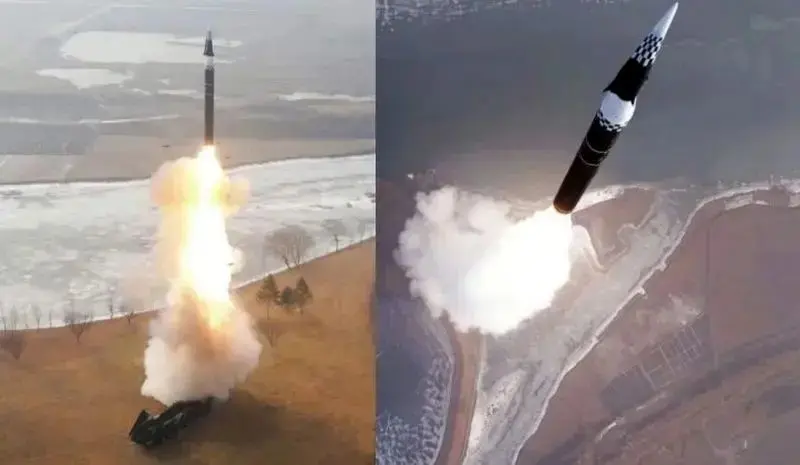China’s Hypersonic Missile Power Display: A Threat to the World?
Rokna Political Desk: China’s unveiling of the DF-27 hypersonic missile, with a range of 8,000 kilometers, has posed a serious threat to U.S. bases and Western aircraft carrier groups, transforming the military balance in the Pacific Ocean.

This strategic weapon, images of which have appeared under camouflage nets, boasts an impressive range of 5,000 to 8,000 kilometers. It not only threatens U.S. military bases in Guam and Hawaii but is specifically designed to sink Western naval strike groups deep in the Pacific, causing significant concern among Western analysts.
Details of the new strategic weapon
The DF-27, which is reportedly either entering service soon or is already operational, is a ballistic platform capable of carrying hypersonic glide vehicle (HGV) warheads. The missile is transported and launched using a large 12-wheel system, and its range places it between China’s DF-26 medium-range missile (with a range of 4,500 kilometers) and the country’s intercontinental ballistic missile arsenal. Its primary purpose is to follow the trajectory of China’s previous anti-ship missiles—the DF-26 and DF-21D—but with the capability of penetrating far deeper into oceanic zones controlled by the West.

China’s undisputed leadership in hypersonic technology
China continues to be recognized as the global leader in the development of hypersonic systems. This new missile is the world’s third medium-range ballistic missile equipped with an HGV, introduced after North Korea’s Hwasong-16B and Russia’s Oreshnik systems. China’s advancements in hypersonic technology have been so significant that in 2021, General John Hyten, Vice Chairman of the U.S. Joint Chiefs of Staff, described a Chinese missile test—whose warhead circled the globe and struck its target with precision—as “astounding.” He warned that China’s rapid development could give it the capability to conduct a surprise nuclear strike against the United States.

China’s challenges and solutions
Although the DF-27 is considered a “carrier killer” on a continental scale, experts identify its weakness as reliance on satellite or drone-based targeting data; disruption of these systems could reduce the missile’s accuracy when striking moving ships.
Nevertheless, Beijing is developing intercontinental stealth drones. These large UAVs are expected to carry extensive sensor suites, independently providing targeting data deep in the ocean for the DF-27, thereby compensating for the missile’s vulnerability.
Send Comments